I wanted to go and planned on visiting the Meteora for years. They truly appear so magnificent and extraordinary that when seeing some picture or a programme on them one cannot help feeling a strong desire to visit them and see them for oneself.
When I finally visited them for the first time in 2006, going there with my hiking club, I was a part of a group that came there by a coach. As hikers logically encourage and support walking, I decided to go on foot with a few people from the group all the way from St Stephen’s Monastery to the Monastery of Great Meteoron. Although the monasteries do not appear at first sight to be far one from the other, owing to numerous curves the length of the road is actually almost 5 km, but this is absolutely worth it and moreover I recommend it wholeheartedly for this distance to be covered on foot because with each step there is a new and magnificent view either at one monastery or more of them. They all belong to a group under the joint name Meteora, which means “in the air.”
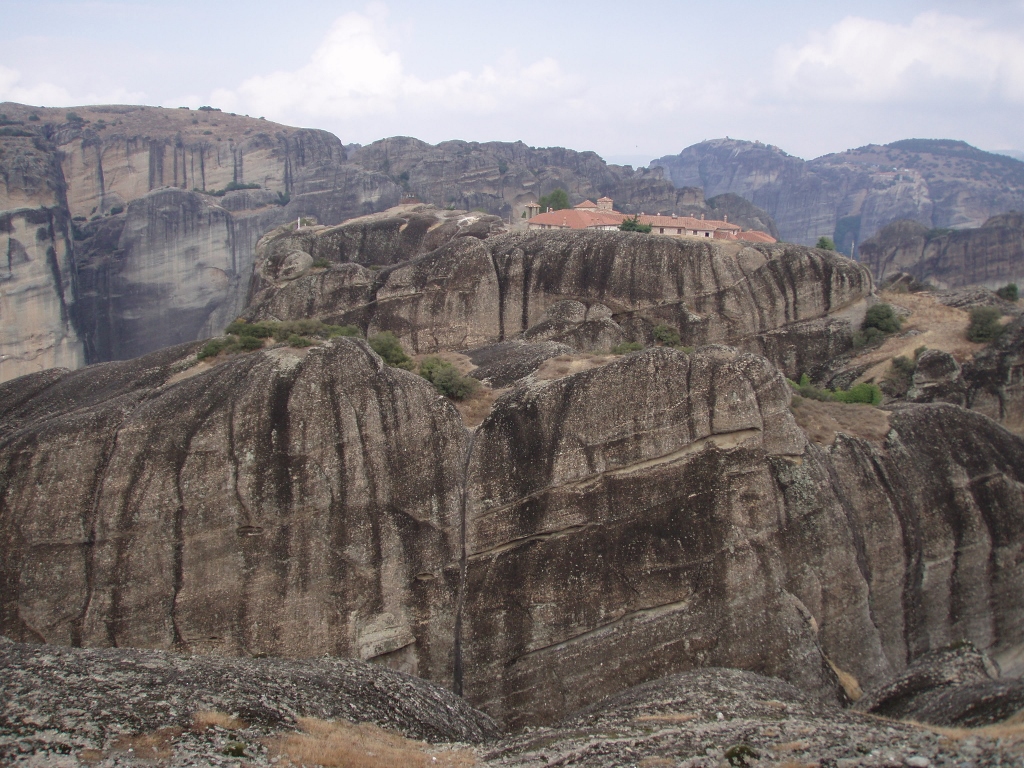 Holy Trinity Monastery, the Meteora
Holy Trinity Monastery, the Meteora
When on that day we came to visit the Meteora, we first headed towards St Stephen’s Monastery, but as it turned out the monastery was closed for the day. As I’ve mentioned in the first part of the text on northern Greece, not all the monasteries are opened every day and during the entire day, and when planning the visit, it would be prudent to check the timetable of the hours when they are open for visitors. As far as St Stephen’s Monastery is concerned, although I didn’t visit it this time, the important fact is that the church in the monastery was built in the 16th century.
The next monastery on our way was the Holy Trinity Monastery, founded in the 15th century. It is one of the monasteries that you may get close to by a car or a coach, but in order to visit it you have to go on foot. The path first leads downwards from the road and then you have to go up the stairs that have in one section been chiselled through the rock itself. Look carefully at the photograph below and you will see the stairs to the bottom-left from the inscription and above it.
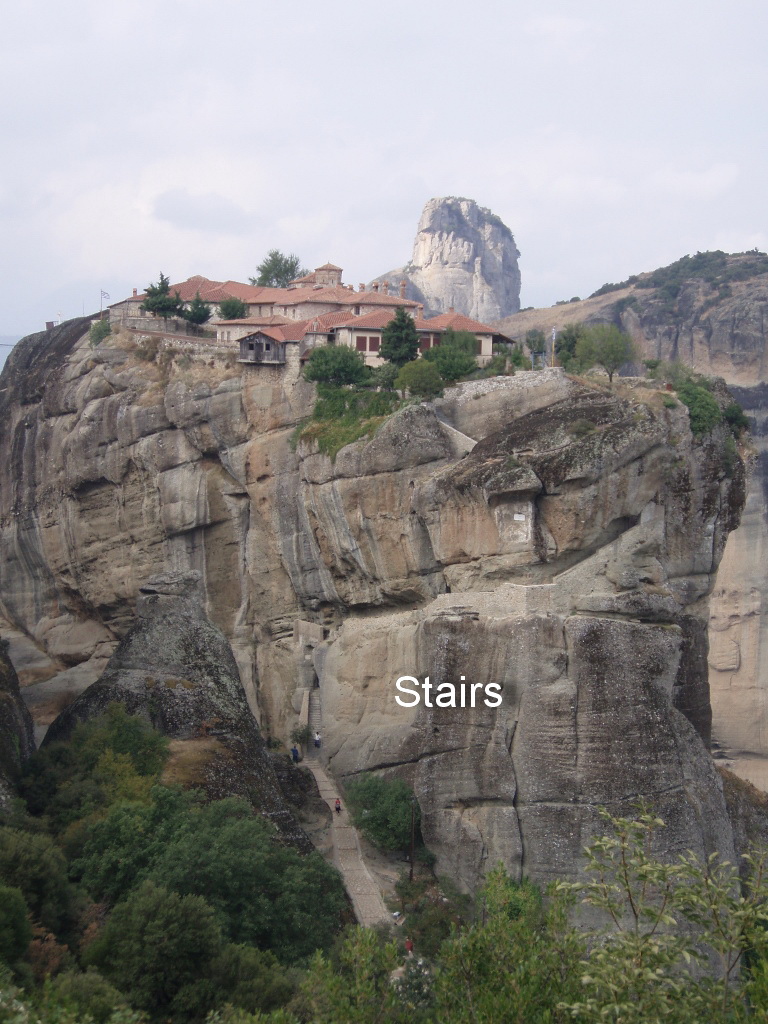 Holy Trinity Monastery, the Meteora
Holy Trinity Monastery, the Meteora
Walking along the road, at one point, I enjoyed a wonderful view of Kalambaka that lies at the foot of the Meteora.
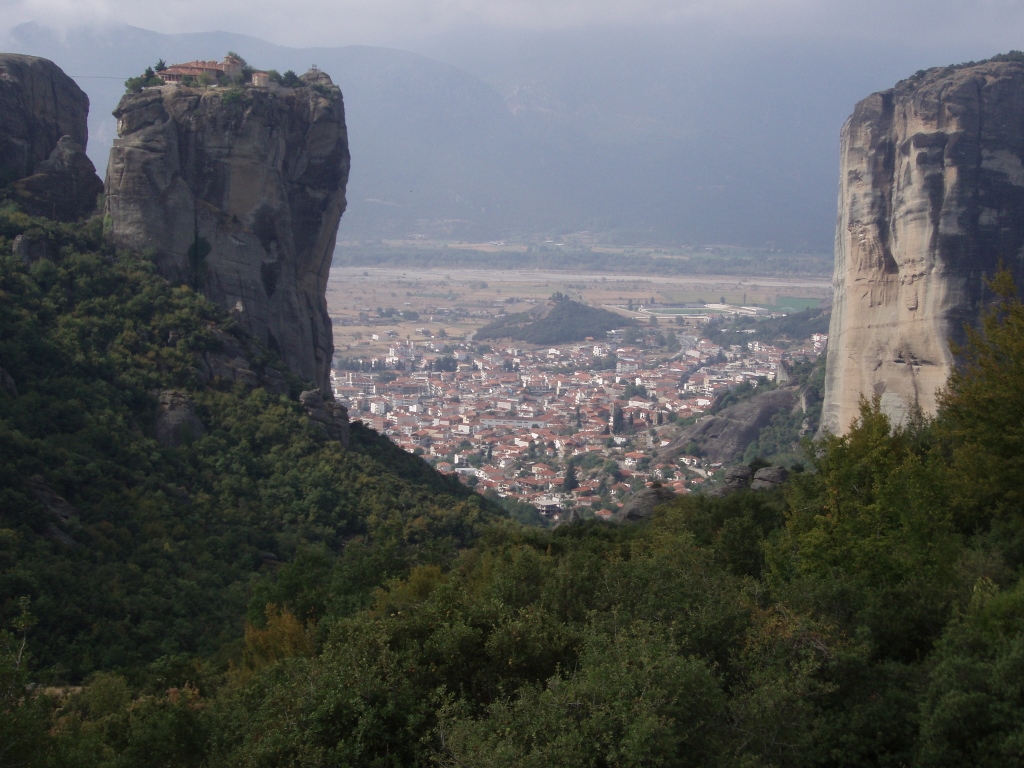 Holy Trinity Monastery, the Meteora and Kalambaka in the background
Holy Trinity Monastery, the Meteora and Kalambaka in the background
But, as I’ve said, with every step one makes there is a new angle of view or all of a sudden there are new vistas of the monasteries we were yet to reach.
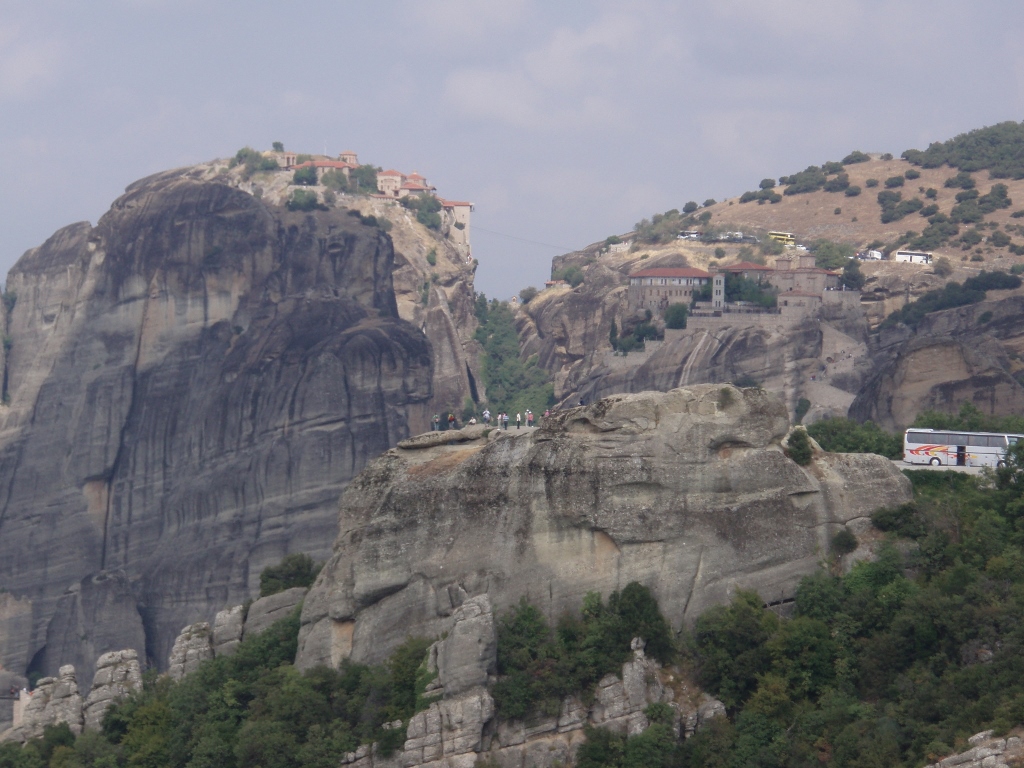 Monasteries of Great Meteoron and Varlaam, with a viewpoint for tourists in between
Monasteries of Great Meteoron and Varlaam, with a viewpoint for tourists in between
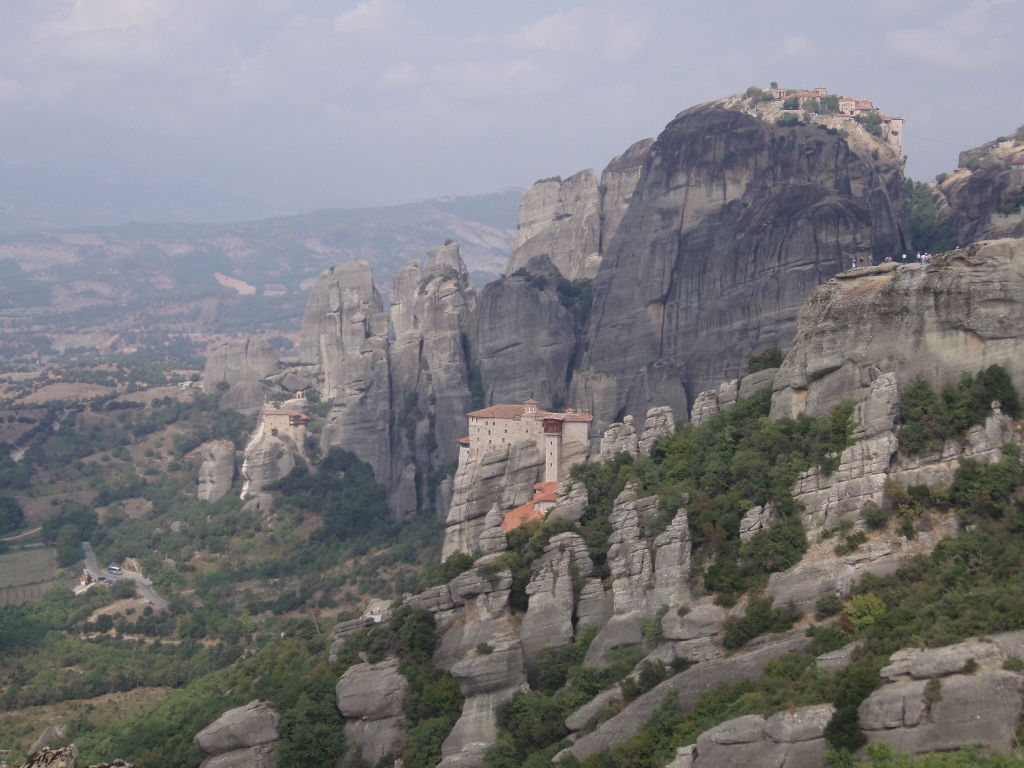 Monasteries of St Nicholas, Roussanou and Great Meteoron (from left to right)
Monasteries of St Nicholas, Roussanou and Great Meteoron (from left to right)
In order to get to the monasteries Roussanou and St Nicholas, it is necessary to turn from the road leading towards the monastery of Great Meteoron. Still, I think it is better to visit first the monasteries of Varlaam and Great Meteoron and then to return to the junction and turn towards those other two monasteries, for this road also leads down to Kalambaka. Both monasteries Roussanou and St Nicholas were founded in the 16th century.
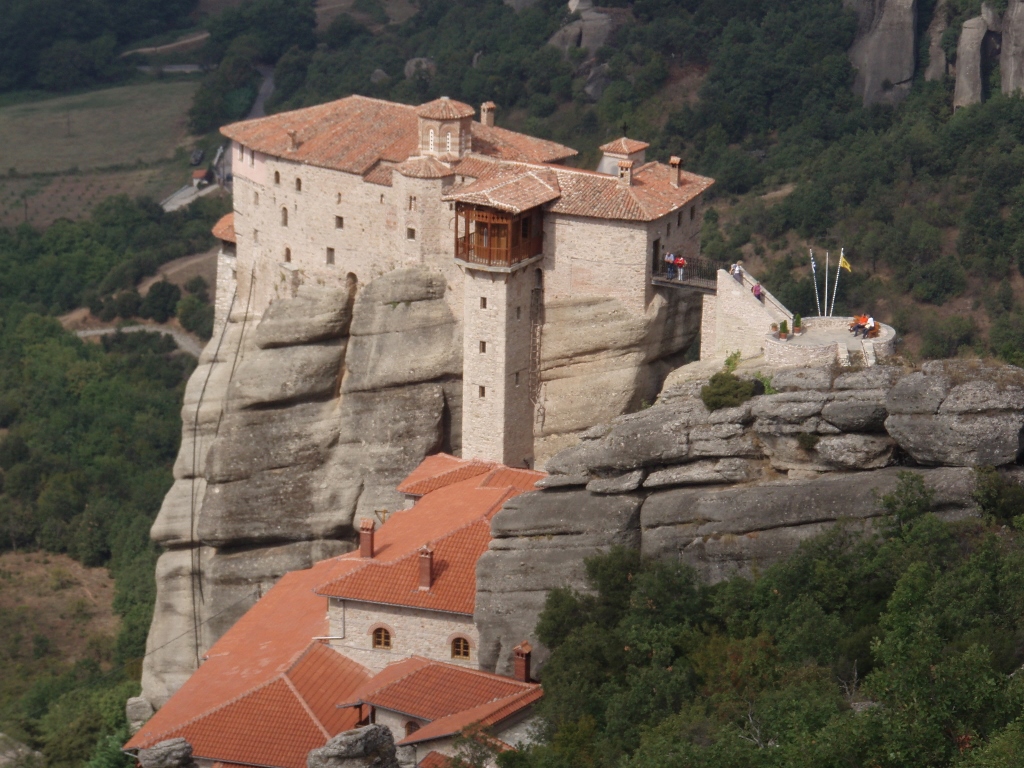 Monastery Roussanou
Monastery Roussanou
There are also huge rock formations with no monasteries on top, but in few places on their sides it was possible to notice some shallow caves that used to be inhabited by hermits of the past.
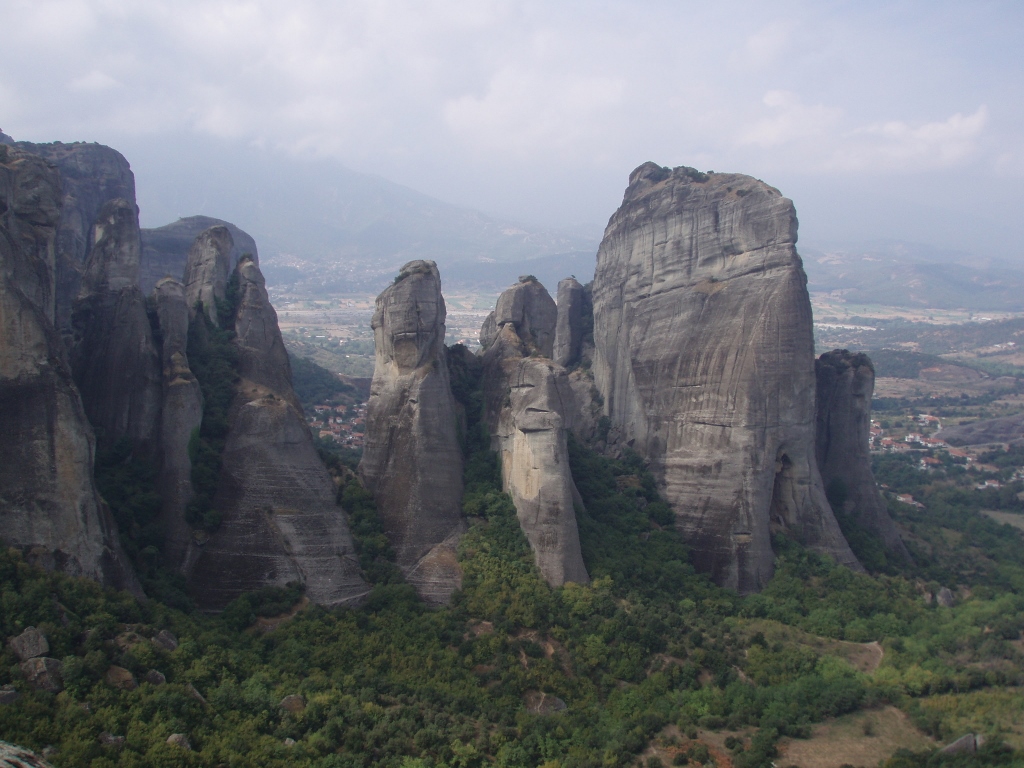 The Meteora
The Meteora
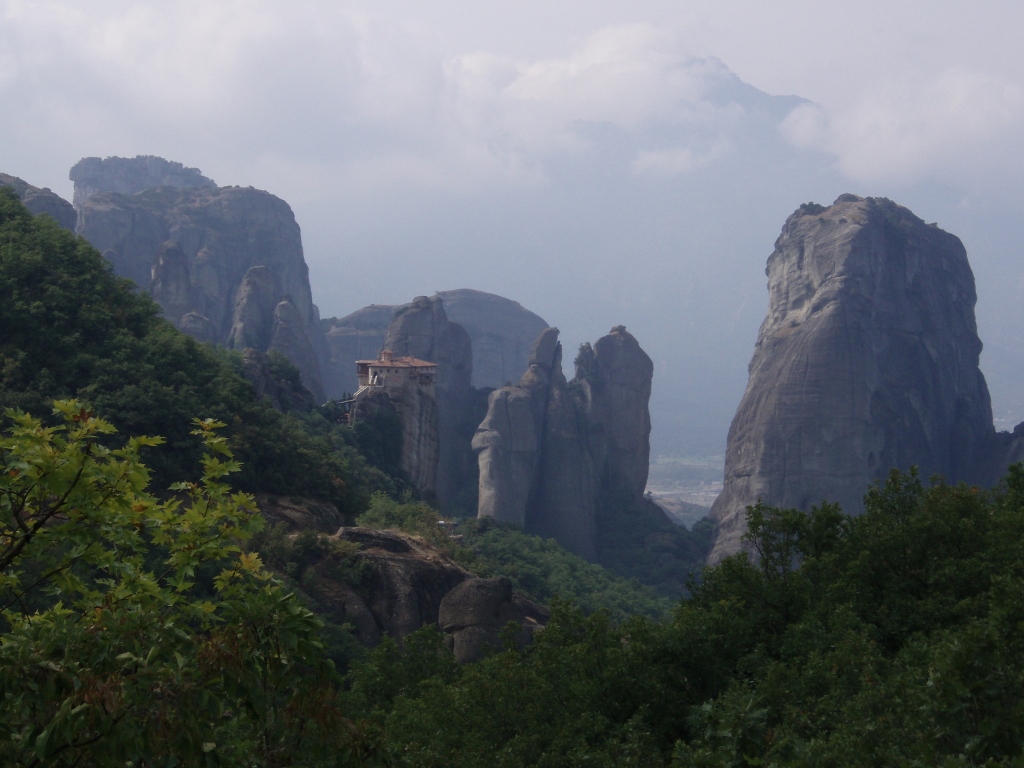 Monastery Roussanou
Monastery Roussanou
The Monastery of Varlaam, dedicated to martyr Varlaam, originates from the first half of the 16th century. This is the second largest monastery in the Meteora.
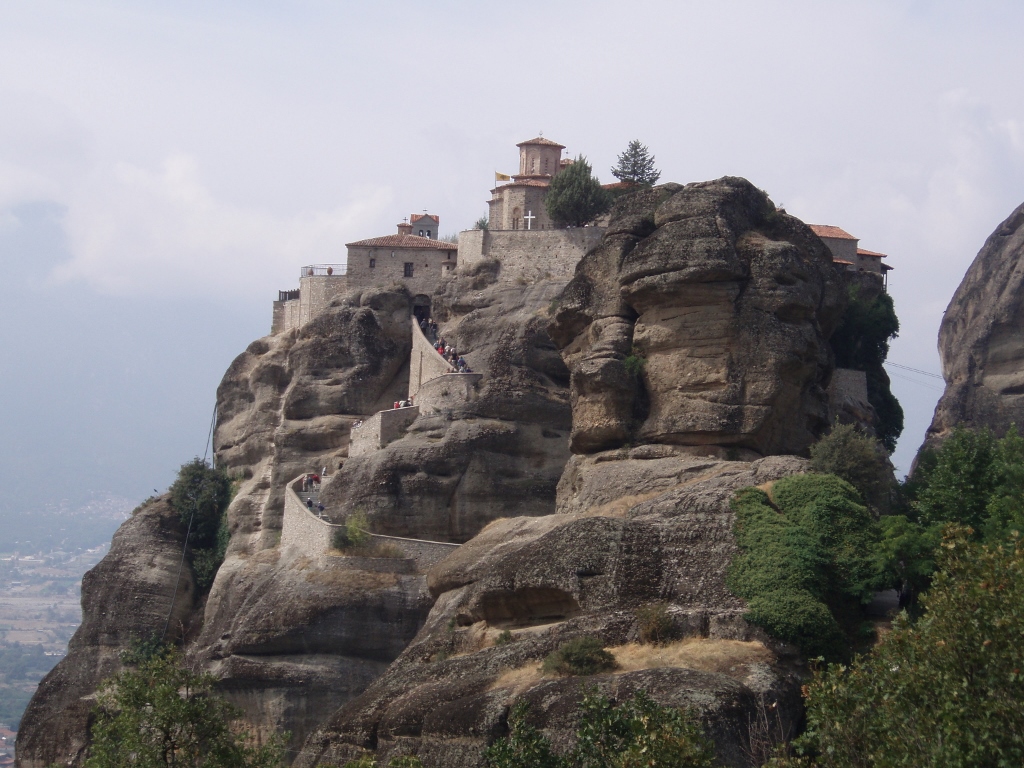 Monastery of Varlaam
Monastery of Varlaam
In order for this monastery to be visited, here it is also necessary to cover numerous steps, as well as a bridge that links two large rocks. In addition, here one can see quite nicely a cableway that is used for the purpose of transporting goods required by the monastery. In the past a manually operated winch was used, but nowadays the whole system is mechanized.
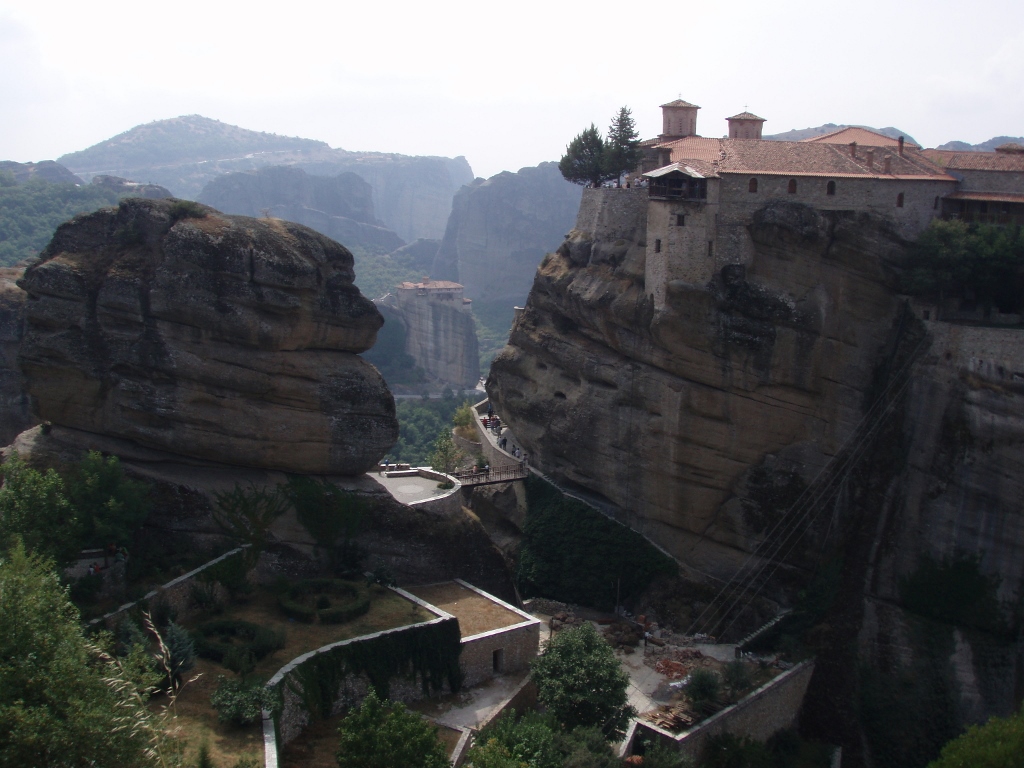 Monastery of Varlaam, with the Monastery Roussanou visible between the two rocks and the supply cableway on the right-hand side
Monastery of Varlaam, with the Monastery Roussanou visible between the two rocks and the supply cableway on the right-hand side
The biggest monastery within the Meteora is the Monastery of Great Meteoron founded around the middle of the 14th century and its church is dedicated to the Transfiguration. Nowadays, there is a small museum within the monastery which displays elements of monastic life for tourists. Here, there is also a supply cableway. For Serbs, however, there is a particularly interesting fact that one of the founders of the monastery came from the Serbian royal dynasty of the Nemanjić, a nephew of the Serbian Emperor Dusan, Jovan Uros Nemanjic, who became a monk here taking the name of Ioasaph. Over time, he was canonized.
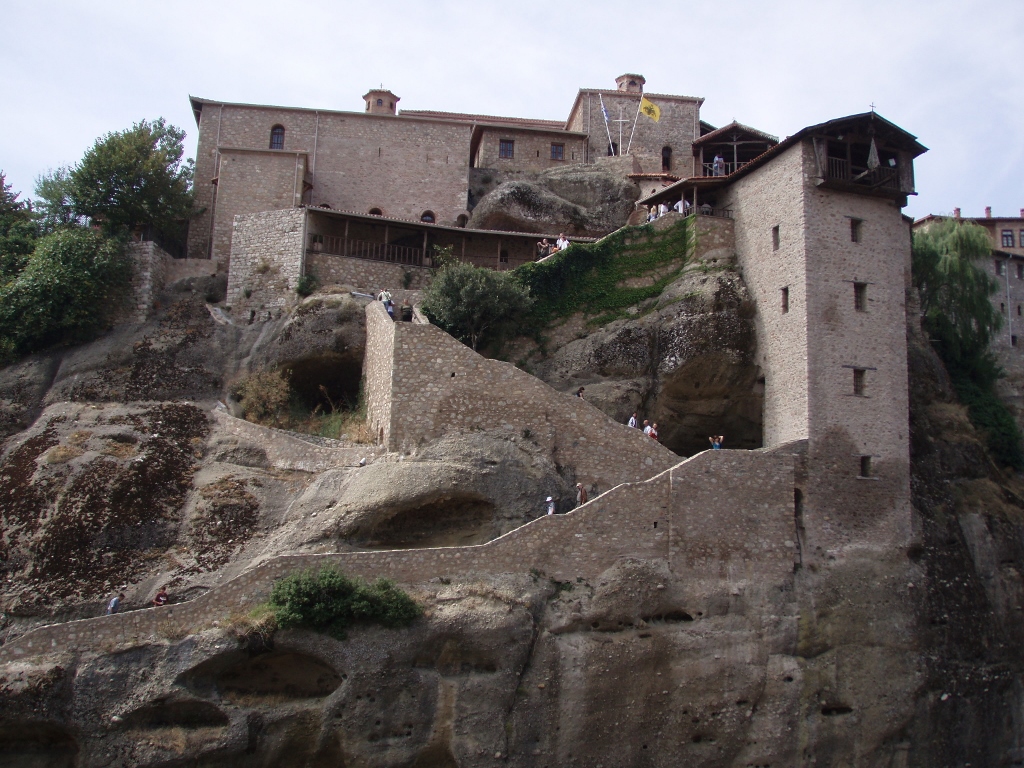 Monastery of Great Meteoron
Monastery of Great Meteoron
And now a slightly light-hearted remark on my side which concerns a view of the Monastery of Varlaam. Look at the picture below – don’t you think that the rock on the right-hand side resembles a bunny’s head?
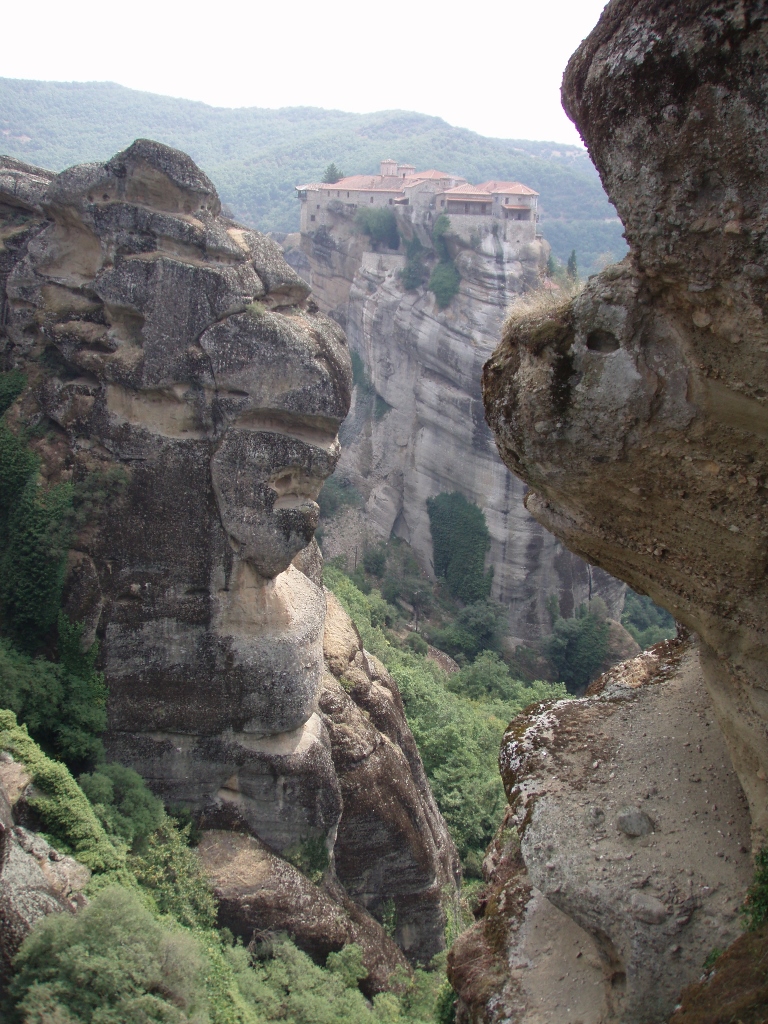 Monastery of Varlaam, with a rock on the right-hand side which reminds me of a rabbit
Monastery of Varlaam, with a rock on the right-hand side which reminds me of a rabbit
And finally, as a farewell from the Meteora, here is once again a sequence of beautiful photos with divine Byzantine spiritual music.
Over the next several days, most of the hiking group went to climb Mt. Olympus, but as I was quite unfit, I stayed back with a few of my friends spending the time either on the beach or walking around some flatland places near the shore. I do regret not climbing Mt. Olympus, but I know from the stories of numerous hikers that this is no small thing and that this is quite an endeavour. To say the least, that seems only natural. It cannot be a small feat to go up there and meddle into the daily routine of gods.
Towards the very end of our stay in Greece, we went to Thessaloniki. There we first had some free time to do some minor sightseeing in the centre of the city, but the main reason for coming here was to pay a visit to the military cemetery Zeitenlik.
This is the place where there is an international military cemetery with the graves of Serbian, French, British, Italian and Russian soldiers from WWI, while after the war Greece ceded this entire large space free of charge for the needs of the military cemetery. When one enters from the street, there is a wide path leading towards a plateau in the middle of which there is an imposing mausoleum which includes a chapel and a crypt with an ossuary. Around the plateau there are crosses for around 2000 Serbian soldiers, although 7441 Serbian soldiers in total were buried at this cemetery. The complete material for the construction of the mausoleum, as well as the marble crosses, were brought from Serbia and around the plateau there are cypresses the saplings of which were brought from the (Serbian) monastery of Hilandar located at the Mount Athos (Holy Mountain) in Greece, east of Thessaloniki.
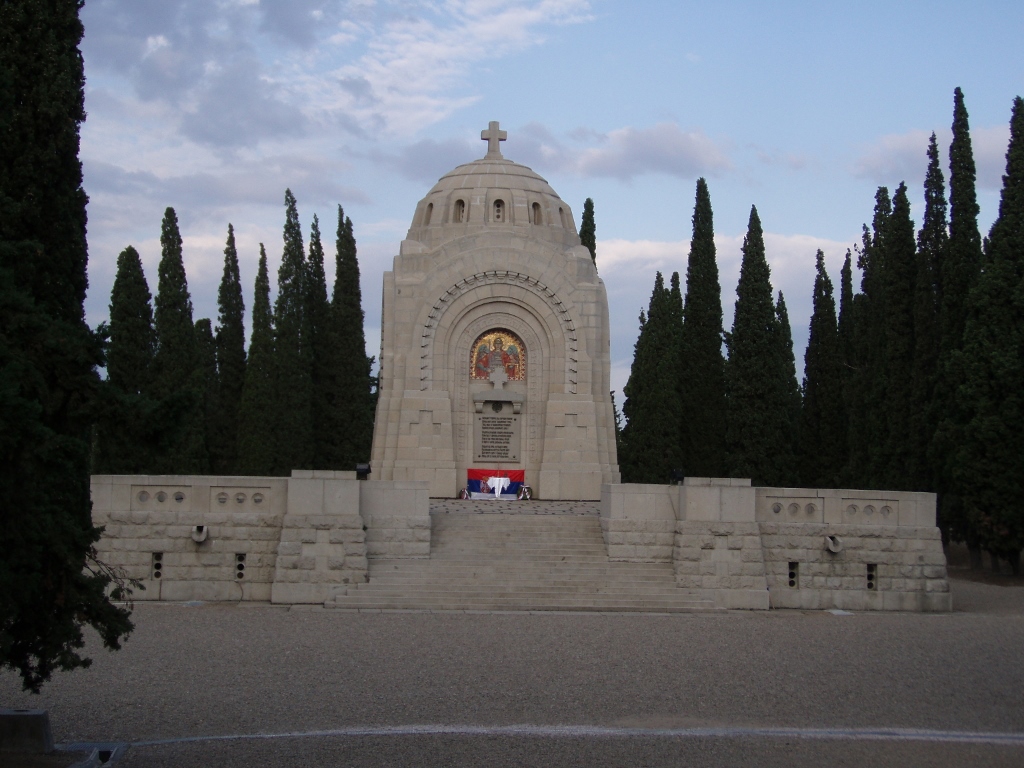 Mausoleum at Zeitenlik
Mausoleum at Zeitenlik
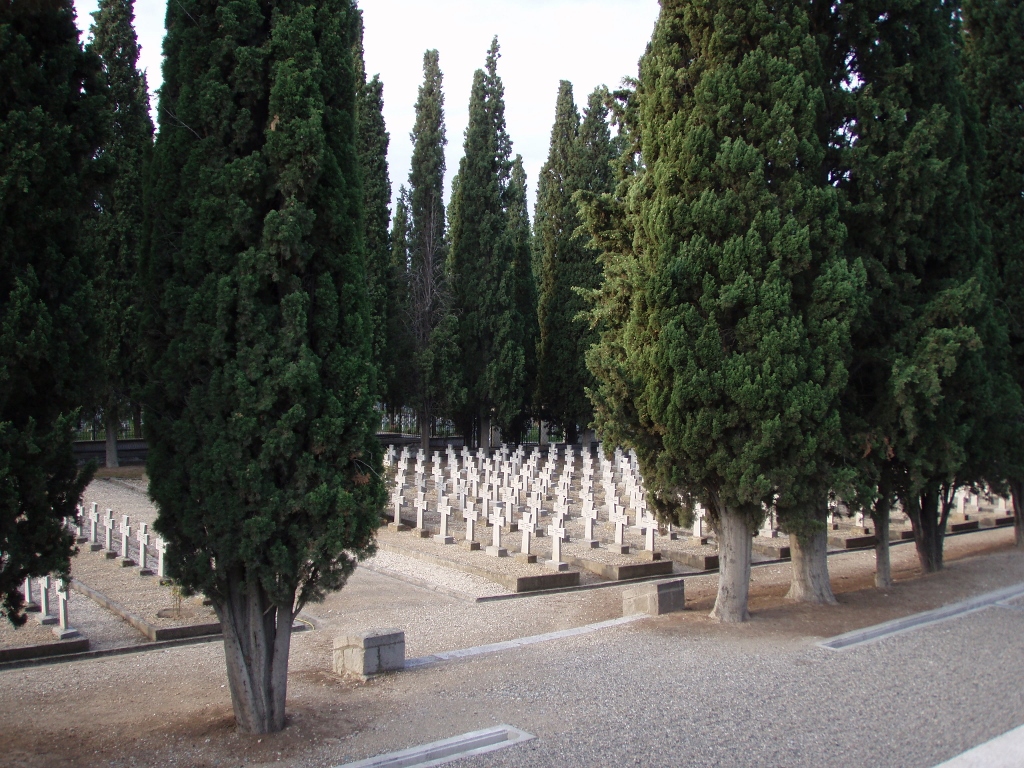 Serbian military cemetery at Zeitenlik
Serbian military cemetery at Zeitenlik
On the front side of the chapel there is a mosaic of the holy Archangel Michael and on the back side there is a mosaic of St George. Both on the front and on the back sides there are verses by Serbian poet Vojislav Ilic Jr. (1877-1944). The first three strophes are on the front site, while the other three are distributed across the back side where there is also the entrance into the crypt. A few years ago, I had the honour and great pleasure to be commissioned to translate this poem into English for the needs of some ministry. I don’t know in fact what they eventually did with it, but I kept my translation and here it is:
“Foreigner unknown, when you by chance pass
By this holy joint tomb so sublime,
Behold, for this is the eternal resting place
Of the greatest heroes of our time!
Their parent is the brave Serbian nation,
Of the world’s historic warfare a giant,
That has treaded all the paths of temptation
And whose soldiers are worthy for being defiant!
They fell from bullets, hunger and thirst,
To the cross they were nailed on the Golgotha height,
But the firm belief in the final victory
They have never lost from their sight...
Blessed be the descendents that for them grieve
For they were the pride of their nation
Blessed be them for the glory they achieve
For the Fatherland, for the King and Liberation
Before the door to the homeland
In their victorious and valiant tread
They gave their lives grandly
For unity and freedom to go ahead,
Their deeds will be celebrated
Until the last days of doom,
Glory to the flock of the immortals!
Peace to the great ones laid down in tomb!”
Since the anniversary of the breach of the Macedonian Front was officially and ceremoniously marked on that day when we were there, there were also representatives of the WWI allied countries’ delegations present at the cemetery, as may be seen in the picture.
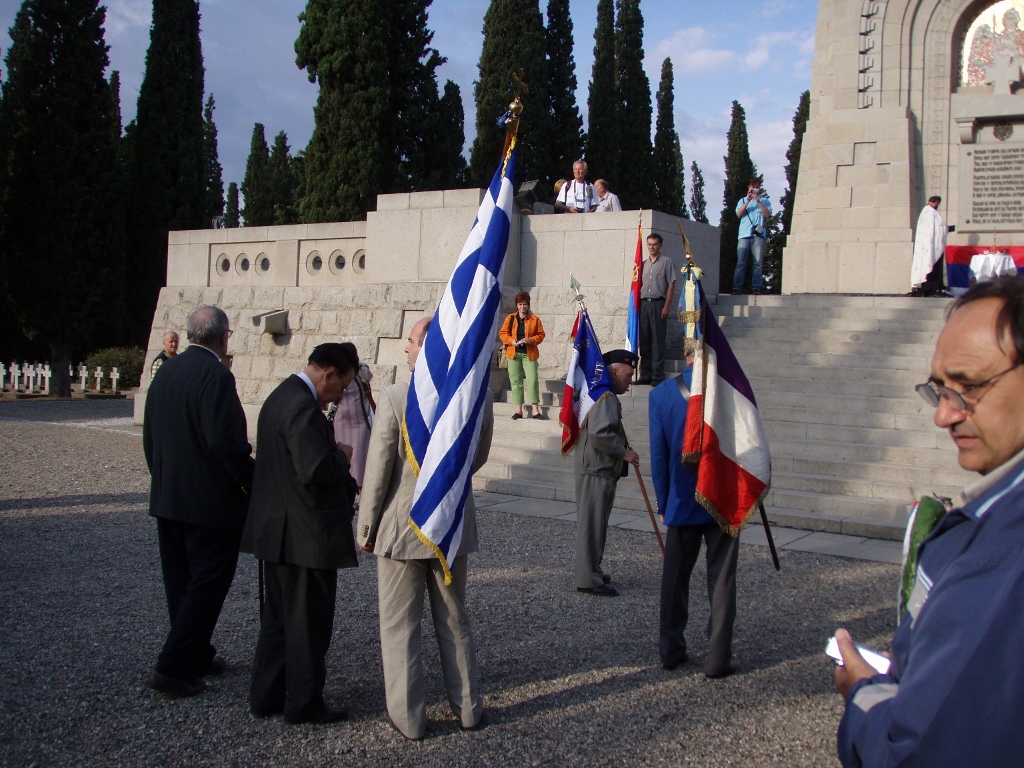 Delegations of the allies from the First World War
Delegations of the allies from the First World War
Still, the main event marking the anniversary of the breach of the Macedonian Front was held at the Memorial site in Polykastro. I guess that a large number of tourists who enter Greece by road coming from the north are in too much of a hurry to reach their summer destinations on the Greek shores and do not care to notice that at only some 20 km from the border between Macedonia (the FYROM) and Greece there is a smaller road leading from the main one and only a couple of hundred meters away one may visit this site – the Five Nations Memorial or the Interallied Memorial.
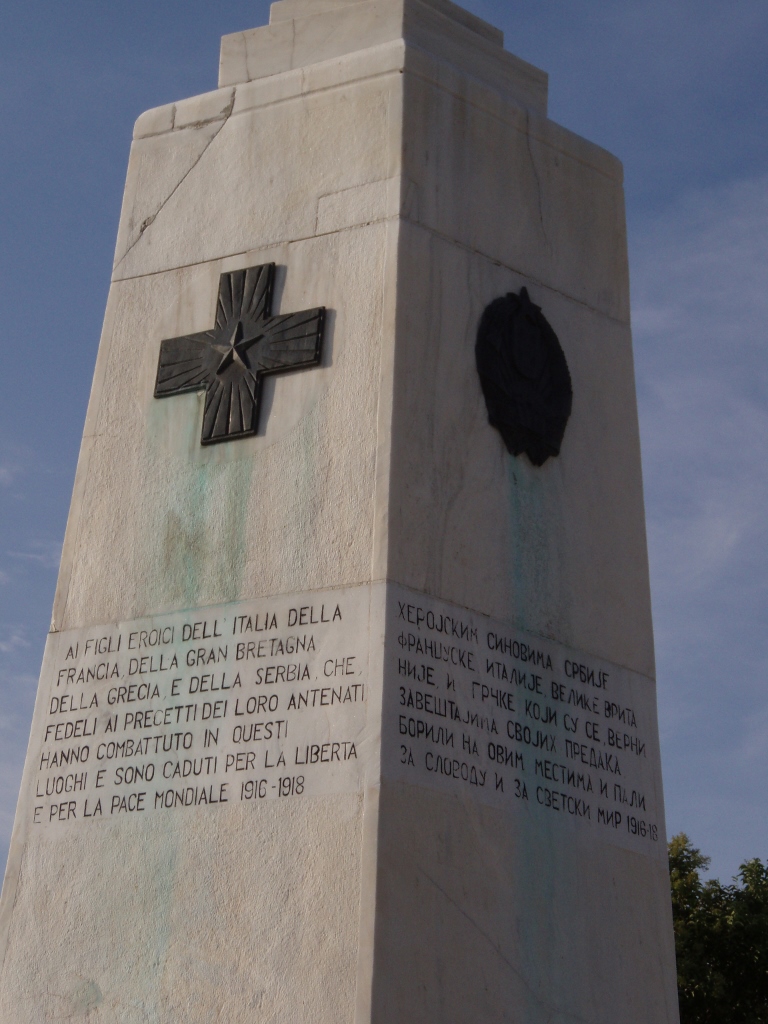 Monument in Polykastro
Monument in Polykastro
The memorial is dedicated “To the heroic sons of Serbia, France, Italy, United Kingdom and Greece who faithful to the legacy of their ancestors fought in these places and gave their lives for freedom and the world peace 1916-1918.”
In 2006, a group of hikers also constituted a part of the delegation from Serbia. It was all very ceremonious and the war heroes of the five countries were properly honoured, as may be seen in the photos below.
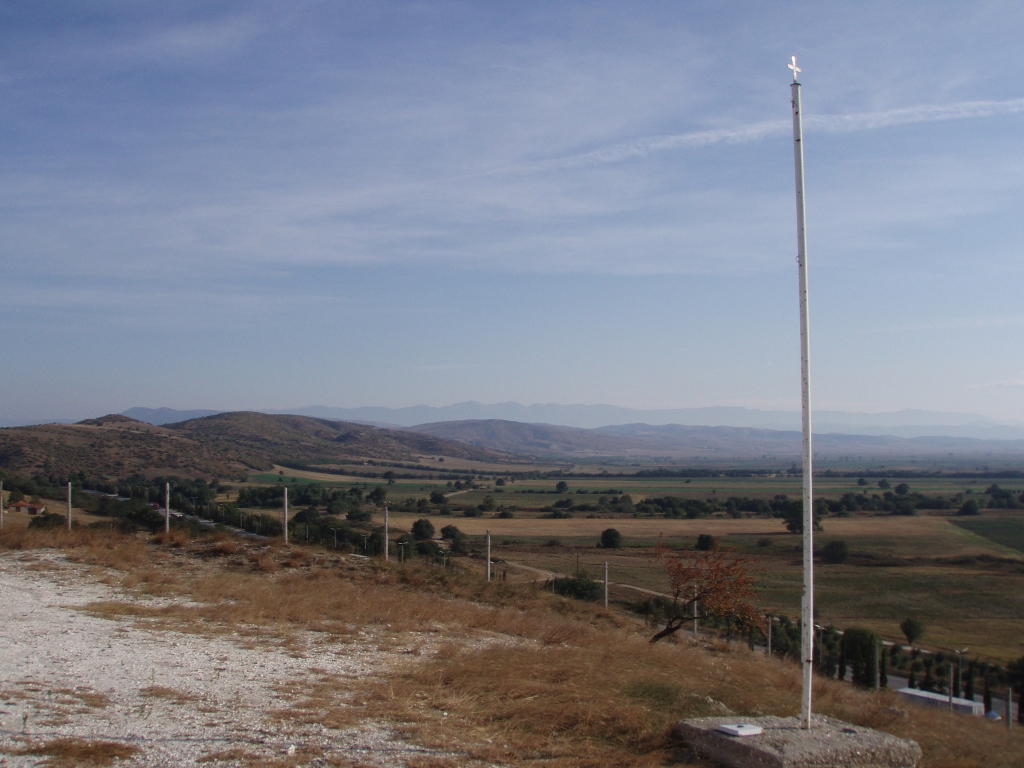 The Macedonian Front of 1915-1918 was stretched along these lowlands in the vicinity of Polykastro
The Macedonian Front of 1915-1918 was stretched along these lowlands in the vicinity of Polykastro
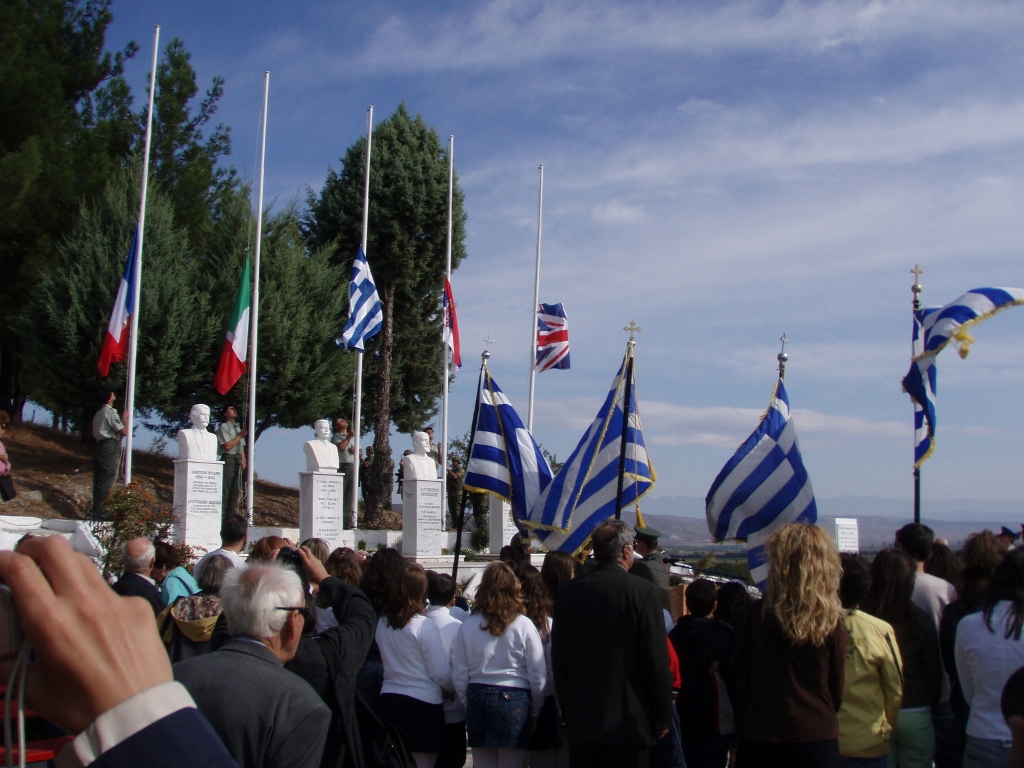 The flags flying at half mast near the busts of the prime ministers of the allied countries in WWI
The flags flying at half mast near the busts of the prime ministers of the allied countries in WWI
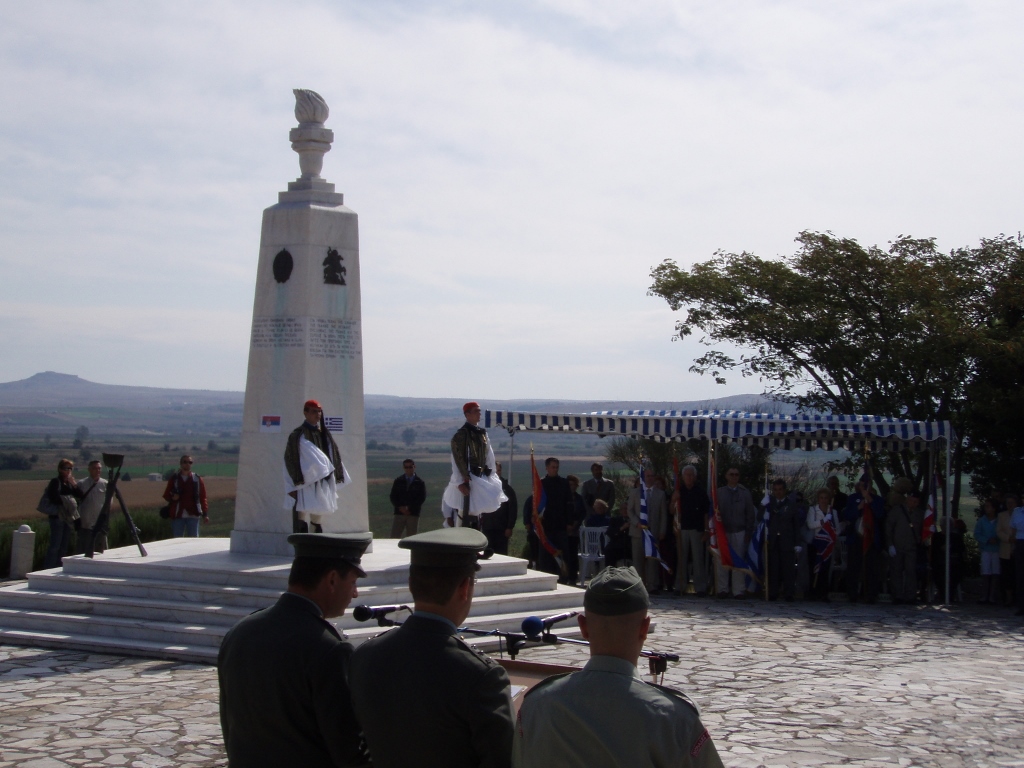 Monument in Polykastro and the honour guard
Monument in Polykastro and the honour guard
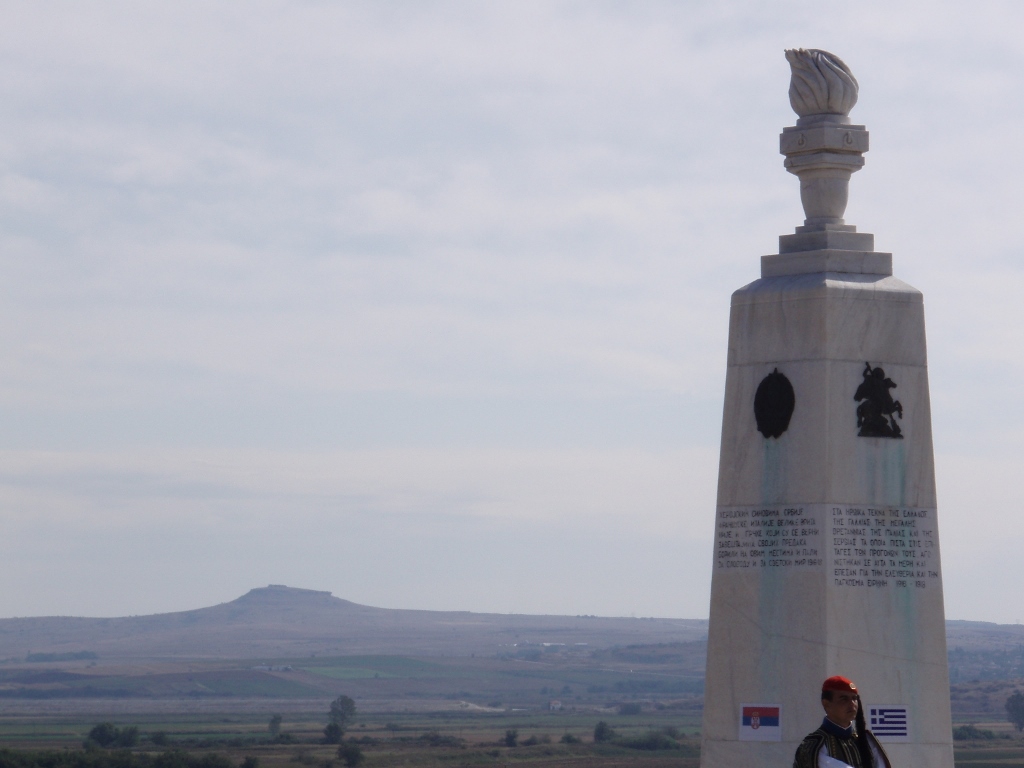 Monument in Polykastro
Monument in Polykastro
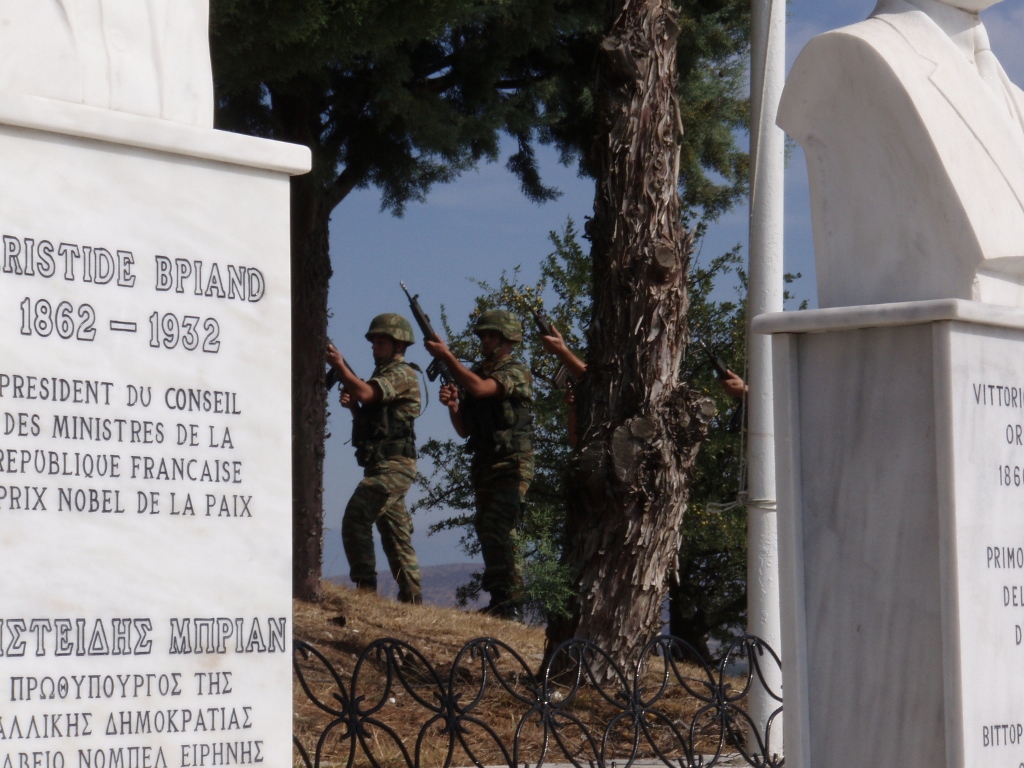 The three-volley salute by the memorial in Polykastro
The three-volley salute by the memorial in Polykastro
And the Serbian soldiers, who needed less than 45 days to cover 600 km on foot and through battles to reach Belgrade and liberate it on 1 November 1918 and who were occasionally faster than the French cavalry, finally saw the day when they could go back to their homeland.